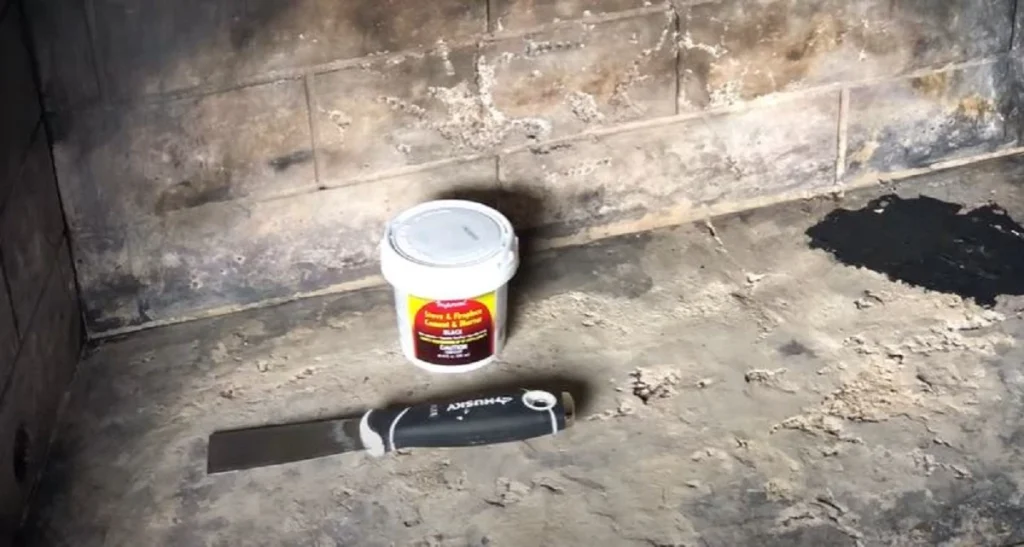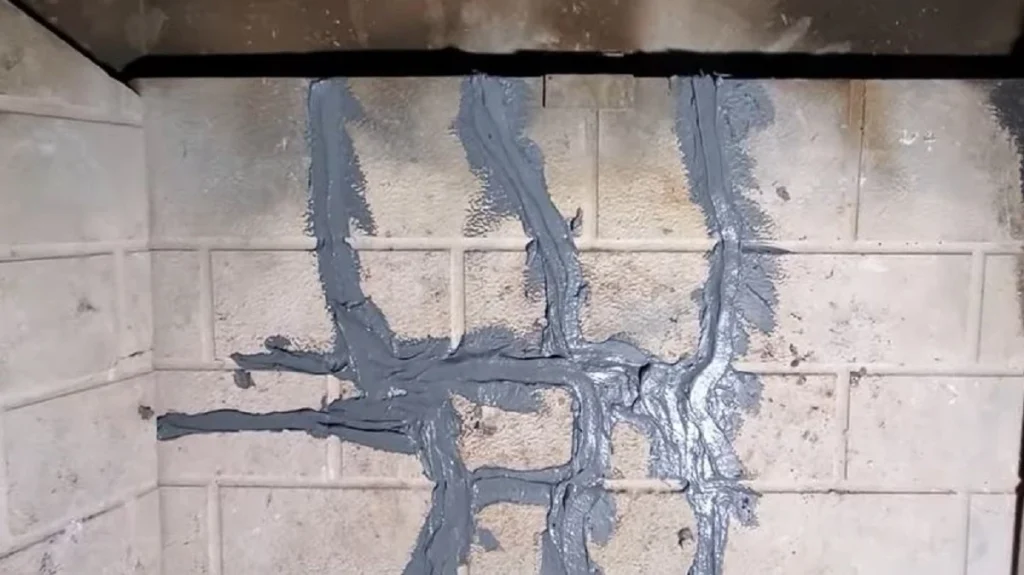Repair Cracks in the Fireplace: The Easy Way
Repairing cracks in fireplaces is essential for safety and functionality. Cracks can appear in various parts of a fireplace, including the hearth, chimney, and firebox. These cracks can range from hairline fractures to more significant gaps. The dangers of ignoring such cracks are substantial. Cracks in the brick-and-mortar can allow harmful gases, like carbon monoxide, to seep into your home, posing serious health risks.
Moreover, cracks can compromise the structural integrity of the fireplace, increasing the risk of fire hazards.
For minor cracks, such as hairline fractures, refractory caulk rated for fireplaces is an effective solution. This caulk can seal these small openings and prevent further damage.
In cases of larger cracks, particularly in areas like the back wall of the fireplace or the chimney, professional assessment and repair are advisable. A chimney professional or a certified mason should inspect these to determine the best course of action.
When repairing a crack in a fireplace insert or firebox, especially if it’s made of metal, it might be necessary to replace the panels. Over time, the interior panels of a prefabricated metal fireplace will require repair or replacement due to wear and tear.
For stone or marble fireplaces, special attention is needed as the repair materials should match the original construction to maintain the fireplace’s aesthetic and functional integrity.
It’s crucial not to use a fireplace with cracked bricks or flue tiles, as this can escalate the risks of fire and gas leaks. In brick fireplaces, installing mortar in joints where it’s missing or flaked out is vital for maintaining the structure’s integrity.
For firebrick fireplaces, using mortar high in calcium and lime is recommended, and fireclay mortar can be particularly effective due to its high fire resistance.
Learn More: Can You Mount a TV Above a Wood-Burning Fireplace?
Fireplace Cracks: Causes and Impacts
Causes of Cracks in Fireplaces
Fireplace cracks can arise from several factors. Thermal stress is a primary cause, occurring when the fireplace undergoes rapid temperature changes. This can cause the materials, like bricks or stones, to expand and contract, leading to cracks.
Structural settling of the house can also lead to cracks in the fireplace. Over time, as the house settles, it can cause movement in the fireplace structure, resulting in cracks.
Another common cause is improper construction or materials. If the fireplace was not built using the right techniques or materials capable of withstanding high temperatures, it might develop cracks over time.
Also, regular wear and tear from years of use can degrade the fireplace materials, leading to cracks.
Dangers of Cracks in Fireplaces
Cracks in a fireplace can pose significant risks. They can compromise the structural integrity of the fireplace, making it less stable and more prone to further damage.
Cracks can also allow harmful gases, such as carbon monoxide, to leak into your home, which is a serious health hazard.
Moreover, they increase the risk of fire hazards, as flames and sparks could escape through the cracks and ignite nearby combustible materials.
It is essential to address any cracks in your fireplace to ensure the safety of your home and family.
Types of Cracks
Superficial Cracks
Superficial cracks are small and often appear on the surface. They can be repaired using a high-temperature sealant or refractory caulk. This material is specifically designed to withstand the heat of a fireplace and can easily fill small cracks.
Deep Cracks
For deeper cracks, a more robust solution is needed. This typically involves using heat-resistant mortar to fill in the cracks. The process requires cleaning the crack area, preparing the mortar, and applying it with precision to ensure that it bonds well with the existing material.
Structural Cracks
Structural cracks are more serious and might require professional intervention. These cracks can affect the overall stability of the fireplace and might need rebuilding or reinforcement of the affected area.

Repairing Fireplace Cracks
Repairing cracks in a fireplace not only enhances its appearance but also ensures its safe operation. The following steps provide a detailed guide to effectively repair these cracks, ensuring the longevity and safety of your fireplace.
Step 1: Assess the Damage
Before starting any repair, it’s critical to assess the extent of the cracks. This step involves a thorough examination of the fireplace, identifying all visible cracks in the hearth, chimney, and firebox. It’s vital to determine whether the cracks are superficial or if they indicate deeper structural issues.
This assessment will guide the choice of materials and techniques used for repair. For deeper or more complex cracks, consulting a professional is advisable to avoid potential safety hazards.
Step 2: Clean the Area
Cleaning the cracked area is essential for a successful repair. This involves removing any soot, ash, or debris from the fireplace. A wire brush can be used to scrub the surface, ensuring that it’s free from loose material.
Cleaning helps in achieving better adhesion for the repair material. If the cracks are inside the firebox, it’s important to use a vacuum or a brush to remove all fine particles.
A clean surface ensures that the repair materials bond properly to the existing structure.
Step 3: Choose the Right Repair Material
Selecting the appropriate repair material is crucial. For hairline cracks, refractory caulk is ideal. This material can withstand high temperatures and is specifically designed for fireplaces.
For larger cracks, use a heat-resistant mortar or cement. These materials are capable of withstanding the extreme temperatures experienced in fireplaces and provide a durable repair solution.
Ensure that the chosen material is compatible with the type of fireplace, whether it’s brick, stone, or metal.
Step 4: Apply the Repair Material
Carefully apply the chosen repair material to the cracks. For caulk, use a caulking gun for precision and ensure that the caulk penetrates deep into the crack. For mortar or cement, use a trowel to fill the cracks, making sure to press the material firmly into place.
Remove excess material for a neat finish. It’s important to fill the cracks to prevent any future issues. Allow adequate time for the material to dry according to the manufacturer’s instructions.
Step 5: Cure the Repaired Area
Allow the repaired area to cure properly. This step is vital for the longevity of the repair. The curing time varies based on the repair material used and the ambient temperature.
Avoid using the fireplace during this period. Proper curing ensures the material sets correctly and can withstand the heat from the fireplace. It also helps in preventing the recurrence of cracks.
Step 6: Inspect and Test
After the repair material has fully cured, inspect the area to ensure the repair is intact and no new cracks have developed. Light a small fire to test the repair under actual operating conditions.
Observe for any smoke or gas leaks and ensure the repair holds up to the heat. This final step is crucial for confirming the effectiveness of the repair and for ensuring the safety and functionality of the fireplace.

Repairing a Cracked Back Wall of Fireplace
The back wall of a fireplace is crucial for containing the fire and protecting the structure behind it. Cracks in this area can be a significant concern.
The repair process involves cleaning the area, preparing it for repair, and using a durable, heat-resistant material to fill in the cracks.
Depending on the extent of the damage, it might be necessary to reinforce the wall or replace some of the bricks or stones.
Metal Firebox Repair in Fireplaces
The firebox is the part of the fireplace that houses the fire, and if it’s made of metal, it can be susceptible to cracking due to high temperatures. Repairing a metal firebox often involves welding or using high-temperature adhesives designed for metal.
It’s important to ensure that the repair material can withstand extreme temperatures and does not release any harmful fumes when heated.
In some cases, if the damage is too extensive, replacing the entire firebox might be the most effective solution.
